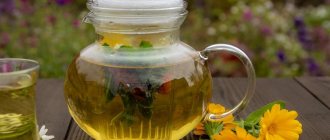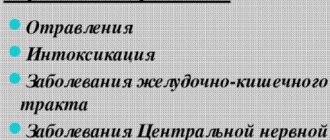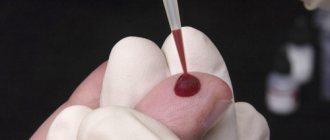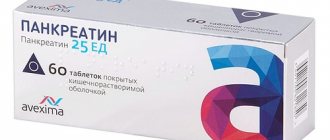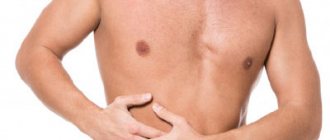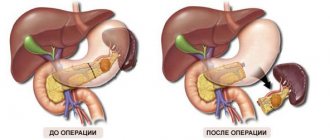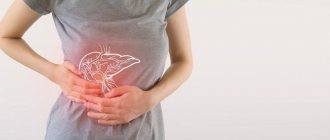Types of liver damage
- Infectious diseases (viral hepatitis).
- Toxic lesions (alcohol, drugs, etc.).
- Autoimmune diseases.
- Diffuse lesions of the liver parenchyma (metabolic disorders).
- Vascular pathologies of the liver.
- Storage diseases (hemochromatosis, etc.).
- Liver helminthiasis.
- Benign and malignant tumors.
Depending on the location of the pathological process, liver diseases are divided into:
- for diseases of the liver parenchyma and interstitial connective tissue;
- damage to the bile ducts;
- pathologies of the vessels of the portal system and hepatic veins.
Medicines used in the treatment of diseases of the liver and biliary tract
Drugs for the treatment of the liver, depending on the mechanism of pharmacological action, can be divided into 3 large groups.
- Hepatotropic:
- choleretic (choleretics, cholekinetics);
- cholelitholytic;
- hepatoprotectors.
- Etiotropic:
- antiviral,
- antibacterial,
- antifungal,
- antiprotozoal.
- Symptomatic:
- antispasmodics (neurotropic, myotropic);
- analgesics;
- anti-inflammatory drugs;
- antiemetics;
- vitamins;
- detoxifying (including antidotes);
- corticosteroids;
- anticytokines;
- probiotics.
Features of the course of the disease
The disease in babies can manifest itself as rapid and frequent secretion of bile (hyperkinetic type of disorder) and slow formation of bile and its stagnation due to relaxation of the sphincter (hypokinetic type). Depending on the type of disorder, therapy will be selected.
How is the disease diagnosed?
Ultrasound is one of the ways to diagnose the disease.
A widely known diagnostic method, ultrasound, will help identify the disease. You do not need to eat before the test so that the doctor can get a good look at the gallbladder. A healthy gallbladder has a round or pear-shaped shape, its walls in normal condition are less than 0.4 cm of homogeneous structure.
Hepatotropic drugs
Choleretic
Choleretic drugs for the treatment of the liver, depending on the mechanism of pharmacological action, are divided into choleretics and cholekinetics.
Choleretics
. These drugs that stimulate bile formation, in turn, are divided into true choleretics and hydrocholeretics. True ones, which contain bile acids, increase the difference in osmotic pressure between blood and bile, enhance intestinal motility and prevent the formation of stones. Hydrocholeretics stimulate bile secretion due to the water component. This group includes drugs of plant and synthetic origin.
Cholekinetics
. Cholekinetic drugs for the treatment of the liver are divided into substances that stimulate the tone of the gallbladder and promote the excretion of bile, as well as antispasmodic drugs that reduce the tone of the biliary tract.
Cholelitholytics
Cholelitholytic drugs are agents for dissolving gallstones. They contain ursodeoxycholic or chenodeoxycholic acid. The mechanism of action of these drugs is associated with impaired absorption of cholesterol in the intestine and a change in the percentage of hydrophobic and hydrophilic bile acids found in the gallbladder. Their use leads to a decrease in the flow of cholesterol into bile and acceleration of the process of dissolution of cholesterol stones.
Hepatoprotectors
Hepatoprotective drugs are drugs that help:
- restoration of homeostasis in the liver;
- normalization of functional activity and hepatic metabolism;
- increasing resistance to the effects of adverse pathogenic factors;
- stimulation of reparative and regenerative processes.
This pharmacological group combines various drugs that have one or another effect on the liver. The category of hepatoprotectors includes products of plant and animal origin, amino acids, ursodeoxycholic acid preparations and essential phospholipids.
Plant hepatoprotectors.
The main components of plant hepatoprotectors: silymarin, cymarin, hophytol. Medicines for liver restoration, containing extracted flavonols, are used for toxic (including alcoholic and drug) lesions, cholecystitis, cholelithiasis, cholangitis, steatosis (fatty liver degeneration).
Hepatoprotectors of animal origin.
Hepatoprotective drugs of animal origin have restorative and detoxifying properties. They are made from hydrolyzed cattle liver or pig liver cells. These medications are indicated for use in the treatment of alcoholic hepatosis, hepatitis and cirrhosis.
Ursodeoxycholic acid.
Ursodeoxycholic acid preparations have hepatoprotective, choleretic, hypocholesterolemic, cholelitholytic and immunomodulatory effects. The active substance reduces the cytotoxicity of fatty acid salts and regulates immunological reactions. Hepatoprotectors with ursodeoxycholic acid are recommended for use in the complex treatment of acute and chronic hepatitis, as well as for toxic lesions and cirrhosis of the liver.
Amino acids.
The main components of hepatoprotective agents in this group are essential amino acids and their derivatives (methionine, arginine, ornithine, aspartate). These compounds, which are part of all cells of a living organism, take an active part in the processes of biosynthesis of proteins, nucleic polymers and lipids. A hepatoprotective drug for the treatment of the liver, containing one of the above amino acids, has pronounced restorative, detoxifying and antidepressant properties.
Essential phospholipids.
These are complex substances of natural origin, which are the main element of cell membranes and mitochondria. By integrating into the membranes of hepatocytes, they recreate their structural and functional integrity and contribute to the restoration of impaired functions. A drug for liver restoration with essential phospholipids improves the clinical status and biochemical blood parameters in patients suffering from steatosis, chronic hepatitis, alcohol and drug damage to the organ and cirrhosis. One of the effective domestically produced products containing phospholipids is Phosphogliv*.
Diseases of the biliary tract in children
Biliary tract diseases are one of the most common diseases in children.
The most common disease in children associated with dysfunction of the gallbladder and impaired outflow of bile is biliary dyskinesia. The etiology of the disease is a violation of contractions of the gallbladder and inconsistency with the contractile function of the sphincter apparatus.
This disease is indicated by symptoms: abdominal pain from the right hypochondrium. The cause of the disease is impaired motility of the gallbladder and sphincter tone, associated with impaired hormonal or autonomic regulation.
Disturbances may be associated with: the sympathetic nervous system, which inhibits the motility of the gallbladder and causes spasms, or the influence of the vagus nerve, leading to hypotension of the sphincter and stimulation of contractions of the gallbladder. Dyskinesia can provoke the development of other diseases of the gastrointestinal tract, such as gastritis and pancreatitis. The cause of the disease may be:
- Neuroses
- Psychological and emotional stress
- Allergies
- Non-compliance with diet
- Parasitic infections
- Symptoms
Hypertensive dyskinesia can manifest itself in a child with the following symptoms:
- Frequent loose stools
- Nausea in the morning and throughout the day after eating
- Formation of bile plaque on the tongue
- Periodic vomiting
- Loss of appetite
- Refusal of active games
In addition, children often complain of headaches, fatigue, and do not tolerate physical activity well. After eating desserts, children feel a burning sensation in the stomach. Children with mixed dyskinesia often have:
- Constipation
- Feeling of bitterness in the mouth
- Swelling on the legs and face
- There is a tingling sensation in the abdomen on the right side
- Frequent belching with an unpleasant odor
In childhood, hypotonic dyskinesia almost never occurs. This type of disease is characterized by the following symptoms:
- Decreased muscle tone of the gallbladder, and, as a result, its increase in size.
- In infants diagnosed with hypotonic dyskinesia, the gallbladder can be felt through the skin, the abdomen enlarges, and body weight decreases sharply. Babies raise their legs to their stomach and report pain with a loud cry.
Etiotropic drugs
Etiotropic therapy drugs are medications whose action is aimed at suppressing vital activity and destroying infectious agents. This group includes:
- antiviral agents
– natural and recombinant interferons. Recommended for the treatment of viral hepatitis; - antibiotics
– macrolides, fluoroquinolones, cephalosporins, tetracyclines. Used in the treatment of diseases of the gallbladder and biliary tract; - antifungals
– medications for the treatment of deep mycoses (fungi). Prescribed for disseminated candidiasis, aspergillosis, cryptococcosis, candidomycosis; - antiprotozoal
- antigiardiasis drugs metronidazole and furazolidone.
Means of symptomatic therapy
Medicines for symptomatic therapy, unlike pathogenetic drugs, reduce the manifestations of the disease, but do not affect the cause of its occurrence.
Antispasmodics
Antispasmodic drugs are prescribed for spastic pain accompanying hepatic colic. In this situation the following can be used:
- neurotropic drugs that disrupt the innervation of myocytes of the gallbladder and biliary tract;
- myotropic, changing biochemical processes in smooth muscle cells of the liver;
- combined (neuromyotropic) complexes.
Analgesics
For short-term relief of pain in the liver area, narcotic and non-narcotic analgesics are used.
- Opioid (narcotic) drugs
. They affect the central nervous system and are prescribed in strictly defined doses to relieve severe pain. - Non-narcotic drugs (derivatives of salicylic acid, aniline, pyrazolone)
. Used for less severe pain symptoms. They have an analgesic effect, reduce the permeability of the walls of liver capillaries, suppress the synthesis of prostaglandins and interleukin-1, and prevent the release of bile enzymes into tissues and blood.
Antiemetics
To relieve nausea and vomiting, which are frequent accompaniments of liver diseases, antiemetic drugs (gastrokinetics) are used.
Vitamins
The most essential micronutrients for the liver are ascorbic and lipoic acid, vitamin E, which maintains the stability and integrity of hepatocytes. B vitamins and retinol are also necessary to restore and maintain the normal functioning of the organ.
Detoxifying agents
Detoxifying medications used to stop exposure to toxic substances include:
- laxatives and emetics;
- osmotic diuretics;
- water-electrolyte balance regulators;
- sorbents;
- blood and plasma substitutes.
In case of toxic liver damage, antidotes (chemical or biological antagonists) are used to neutralize the poison, prevent or eliminate the effect it causes.
Glucocorticosteroids
Can be recommended for use as a means of pathogenetic treatment for severe liver diseases. These drugs regulate immunological activity, suppress the production of antibodies, inhibit the formation of connective tissue, reduce the manifestations of the inflammatory reaction, have a tonic effect, and inhibit the development of intrahepatic bilestasis.
Probiotics
Probiotic preparations are complexes of viable beneficial bacteria. They normalize the composition of the intestinal microflora and are used to restore the normal functioning of the hepatobiliary system and the entire digestive tract after etiotropic therapy. These drugs are also used in the treatment of patients with liver cirrhosis. Colonization of the intestines with beneficial bacteria significantly reduces the level of serum ammonia concentration, preventing the development of hepatic encephalopathy.
Place of choleretic drugs in clinical practice
Bile is an isosmotic fluid consisting of water, electrolytes, organic substances (bile acids and salts, cholesterol, conjugated bilirubin, cytokines, eicosanoids, etc.) and heavy metals, in particular copper. The total amount of bile produced by the liver per day averages 600 ml. The main organic components of bile are bile acids, which come from two sources.
- Primary bile acids (cholic, chenodeoxycholic) are synthesized from cholesterol in hepatocytes.
- Secondary bile acids (deoxycholic, lithocholic) are formed from primary bile acids in the intestine under the influence of bacteria.
Tertiary bile acids (sulfometacholic, ursodeoxycholic) can also be formed in the liver and intestines, which, like secondary ones, participate in the enterohepatic circulation.
Bile performs two important biological functions in the body:
- removal from the body of lipophilic components that cannot be utilized and excreted in the urine;
- secretion of bile acids, which are involved in the digestion of dietary fat and the absorption of its hydrolysis products.
The main components of bile as biliary secretion are presented in Table 1, and as biliary excretion in Table 2.
Biliary excretion is the only way to remove plant sterols such as sitosterol, as well as xenobiotics present in plants, from the body, preventing their accumulation in the body. All of them, as well as a number of lipophilic drugs - metabolites of fat-soluble vitamins and steroid hormones - in the hepatocyte are conjugated with glutathione, sulfates, glucuronic acid, and less often with glucose, xylose, glycine or taurine and are secreted into bile. These components of bile, and primarily plant sterols, due to conjugation with glutathione, increase the concentration of organic anions in the canaliculi and participate in the formation of a bile fraction independent of bile acids, and thus have a choleretic effect.
The formation of bile consists of the following stages:
- capture from the blood of a number of its components (bile acids, bilirubin, cholesterol, etc.) at the level of the basolateral membrane;
- metabolism, as well as the synthesis of new components and their transport in the cytoplasm of hepatocytes;
- their release through the canalicular (biliary) membrane into the bile canaliculi;
- entry of bile into the intrahepatic biliary system (bile ducts);
- its accumulation and concentration in the gallbladder;
- entry into the small intestine, absorption of its components and their entry into the enterohepatic circulation.
Through the basolateral membrane of hepatocytes from the blood plasma (from the spaces of Disse) bile acids, amino acids, unconjugated bilirubin, glucose and a number of endogenous and exogenous xenobiotics, including drugs, plant sterols and xenobiotics, enter the cytoplasm of hepatocytes. These processes are carried out due to the presence of Na+-K+-ATPase in the basolateral membranes, as well as specific and nonspecific carrier proteins for organic anions that have cross-reactivity. The functioning of Na+-K+-ATPase ensures the energy potential and ionic balance of the cell, as well as the normal fluidity (permeability) of cell membranes.
In the hepatocyte, two primary bile acids are synthesized from cholesterol: cholic and chenodeoxycholic, which are conjugated with amino acids - glycine or taurine. Conjugation ensures their solubility in water even at acidic pH values, makes them resistant to precipitation by calcium ions and reduces their permeability through cell membranes. Primary conjugated and deconjugated bile acids also enter the hepatocyte from the enterohepatic circulation. The former are unchanged, and the latter, after reconjugation, are again secreted into bile. Secondary bile acids - deoxycholic and lithocholic, which are products of microbial metabolism from cholic and chenodeoxycholic acids, respectively, enter the hepatocyte from the enterohepatic circulation and are conjugated. Deoxycholic acid binds to glycine or taurine and circulates along with primary bile acids.
Lithocholic acid, along with glycine and taurine, is also conjugated with sulfates, which sharply reduces its absorption and entry into the enterohepatic circulation. The latter is of great biological importance, namely: maintaining the integrity of hepatocytes and biliary epithelium. Less commonly, ursodeoxycholic acid, which is a product of microbial modification of primary bile acids, is included in the enterohepatic circulation. Its maximum content in the general pool of bile acids does not exceed 5%.
Intracellular transport of bile acids from the basolateral to the canalicular membrane of the hepatocyte is carried out by cytosolic proteins (3-α-hydroxysteroid dehydrogenase, etc.). The endoplasmic reticulum and Golgi apparatus are also involved in this process. Great importance is attached to the transcytosolic vesicular transport of bile acids, bilirubin and lipid-containing substances. The transit time of bile components from the basolateral to the canalicular membrane is about 10 minutes.
Canalicular secretion is the most important step in the formation of bile. Bile components enter the canaliculi in four ways:
- active transport of simple molecules with the participation of ATP-dependent pumps;
- exocytosis of lipid- and protein-containing vesicles;
- vesiculation of phospholipid molecules from the surface of canalicular membranes induced by bile acids;
- passive flow of fluid from the spaces of Disse through tight intercellular junctions.
Excretion of bile components from hepatocytes is carried out with the participation of ATP-dependent transport proteins that are capable of moving bile components from the cytoplasm into the lumen of the tubules against a concentration gradient.
As a result of their functioning, bile acids and their salts, as well as a number of other osmotically active substances (glutathione, bicarbonates), enter the tubules. The latter are involved in the formation of bile fractions dependent and independent of bile acids, each amounting to 225 ml/day. Water diffuses into the tubules along an osmotic gradient from the sinusoids through tight intercellular junctions, on average 150 ml/day.
Those compounds that are actively transported into the canaliculi from hepatocytes and participate in the formation of bile are designated as primary components of bile (conjugated bile acids, organic anions, etc.). They are not able to pass through the intercellular junctions of the tubules. The primary components of bile, and primarily bile acids, have choleretic activity. Molecules that enter the canaliculi passively through intercellular connections are designated as secondary components of bile. They contain water, electrolytes, glucose, and calcium ions.
Bile flow in the canaliculi is ensured by active canalicular secretion and contraction of pericanalicular actin filaments, which are induced by conjugated bile acids. From the canaliculi, bile through the intermediate canaliculi of Hering enters the extralobular bile ducts, which, connecting with each other, form the lobar and then the common bile duct.
During the passage of bile through the intrahepatic bile ducts, its composition changes: water diffuses into the lumen through the intercellular connections of the ductal epithelium; cholangiocytes absorb glucose and some organic acids; Glutathione is hydrolyzed to amino acids, which are partially absorbed. When unconjugated bile acids appear in bile, the latter are absorbed passively by cholangiocytes and enter the hepatocyte through the periductular capillaries (cholehepatic circulation of bile acids). Under the influence of secretin and glucagon, active secretion of bicarbonates occurs and an increase in the content of IgA and mucus is noted.
During the interdigestive period, the bulk of bile enters the gallbladder, where it is concentrated as a result of the absorption of water, electrolytes, including calcium ions. This absorption leads to activation of the Na+/H+ exchanger, as a result of which bicarbonates are replaced by CO2 and the pH level of bile decreases. Mixed micelles are stored in bile, which include a fairly large number of molecules, but they have the same osmotic potential as monomers.
As a result, gallbladder bile can contain anions in concentrations exceeding 200 mmol and remain isotonic.
During a meal, the gallbladder empties and remains contracted for 30–45 minutes, and the sphincter of Oddi remains in a relaxed state. During this period, the mucous membrane secretes water and electrolytes into the lumen of the gallbladder, which helps flush out all accumulated substances from it, and liver bile continuously flows into the duodenum. In the absence of a gallbladder, during the interdigestive period, hepatic bile is deposited in the proximal parts of the small intestine, mainly in the duodenum, and after eating it enters the distal parts. Excessive content of weakly concentrated bile in the duodenum with the development of duodenal hypertension is one of the mechanisms for the development of pain and dyspeptic disorders in patients who have undergone cholecystectomy.
Once bile enters the small intestine, the metabolism and transit rate of each of its components differ significantly. Thus, the transit rate of bile acids is significantly lower than that of other bile components. Only a small part of bile acids (no more than 5%) is lost in feces; the bulk of them is absorbed and enters the enterohepatic circulation.
In the proximal parts of the small intestine, part of the bile acids conjugated with glycine is absorbed passively. The bulk of bile acids is actively absorbed with the participation of a specific carrier protein (an ideal transporter for bile acids), which is localized on the apical surface of enterocytes.
In the distal small intestine and colon, bile acids undergo microbial deconjugation and are readily absorbed.
Entering the portal blood, the bulk of bile acids (70–90%) bind to albumin and return to the liver, where they are captured by hepatocytes, conjugated and transported again to the biliary system and intestine. As a result of the above enterohepatic circulation, a pool of bile acids is formed in the body, equal to approximately 5 mmol with a half-life of 2–3 days.
The leading role in the regulation of choleresis belongs to the gastrointestinal hormones - cholecystokinin and secretin. Cholecystokinin is secreted by hormonal cells of the duodenum. Its main effects are:
- to increase the flow of hepatic bile;
- contraction of the gallbladder;
- relaxation of the sphincter of Oddi;
- increased pancreatic secretion;
- decrease in pressure in the biliary system.
The production of cholecystokinin, and therefore the production of bile, is stimulated by fats, especially with the presence of long-chain fatty acids (fried foods), proteins, acids, constituent components of choleretic herbs (alkaloids, protopine, sanguinarine, essential oils, fats, etc.), cholinergic stimuli .
Secretin, produced in the duodenum, stimulates the secretion of water, electrolytes and bicarbonates by the epithelium of the biliary and pancreatic ducts and potentiates the effects of cholecystokinin. The main stimulators of secretin secretion are hydrochloric acid, fats, bile acids and, possibly, plant alkaloids and sterols.
In the regulation of bile formation and bile excretion, pressure in the bile ducts plays a certain role (normally 15–20 cm of water column). When the pressure in the ducts increases, the secretion of bile decreases, and when the level of 35 cm of water column is reached, the secretion of bilirubin, bile acids and water completely stops.
Drug correction of bile formation processes is possible at its various stages.
- Influence on the formation of bile acid-dependent and independent bile fractions. Stimulation of the production of the first of these is possible with the use of drugs containing bile acids (allochol, lyobil, cholenzyme, festal, panzinorm, etc.). An increase in the volume of the second of them can be achieved by prescribing drugs containing alkaloids, sterols, essential oils of plants, increasing the concentration of bound and free glutathione and other anions in the canaliculi (fumaria, immortelle flowers, corn silk, tansy flowers, St. John's wort, etc.) or chemical preparations synthesis, increasing osmotic pressure and promoting fluid flow into the canals (oxaphenamide, cyclone).
- Influence on the production of cholecystokinin and secretin in order to either increase or decrease the flow of bile into the intestine. Thus, the intake of fatty, fried, sour and dense foods, as well as preparations containing bile acids, vegetable fats and essential oils, alkaloids, bitterness, stimulate the production of cholecystokinin and secretin and, accordingly, bile and pancreatic secretions.
- Reducing pressure in the gallbladder and bile ducts is an important mechanism that activates bile formation. Consequently, drugs that stimulate the contractile function of the gallbladder and/or reduce the tone of the sphincter of Oddi have an indirect choleretic effect. Most drugs with the above properties realize their effect through an increase in the production of cholecystokinin (hymecromone, polyhydric alcohols, magnesium sulfate, hepabene, berberine bisulfate, coumarins, etc.).
- Influence on the content of bile salts in the small intestine, aimed at both reducing and increasing them in the enterohepatic circulation. Thus, the administration of drugs containing bile acids and excessive bacterial growth in the proximal small intestine increase the pool of bile acids in the enterohepatic circulation and reduce their synthesis in hepatocytes. The binding of bile acids in the intestine, for example, by cholestyramine or aluminum-containing antacids, and a decrease in their entry into the liver with portal blood, on the contrary, increases their synthesis from cholesterol.
In clinical practice, drugs that enhance the production of bile and its flow into the intestines are widely used. Choleretic drugs can have both positive and negative effects on the functions of the digestive tract if all indications and contraindications for their use are not taken into account.
The mechanism of action of choleretic drugs is:
- to improve digestive processes associated with the participation of bile acids in the hydrolysis of neutral fat and stimulation of the production of pancreatic secretions by cholecystokinin, secretin and bile acids;
- activation of intestinal motor function due to the direct action of bile salts, including their osmotic effect, leading to fluid flow into the intestinal lumen and an increase in intraluminal pressure, as well as the influence of intestinal hormones (cholecystokinin, etc.);
- prevention of excessive bacterial growth in the small intestine, which is ensured by the bactericidal effect of bile acids, prevention of intestinal stasis, normalization of digestive processes;
- increasing the circulation of bile in the gallbladder, which reduces its lithogenicity, ensures sterility, stimulates the contractile function of the gallbladder and coordinates the tone of the sphincter of Oddi;
- excretion from the body of endogenous and exogenous xenobiotics, cholesterol, maintaining the balance of microelements;
- normalizing the absorption of fat-soluble vitamins and preventing the development of osteoporosis.
When prescribing a choleretic agent, the following must be clearly understood:
- indications and contraindications for its use and expected therapeutic effect;
- what is the mechanism of action of the prescribed drug: it stimulates the production of a bile fraction dependent or independent of bile acids or it affects the contractile function of the gallbladder;
- Are hepatocytes in a particular patient capable of capturing, synthesizing and secreting bile components into the biliary system (canaliculi, ducts). The presence of dystrophy, necrosis, a decrease in the number of functioning hepatocytes, as well as hepatocellular cholestasis is taken into account;
- the patency of the intrahepatic and extrahepatic biliary system is preserved or impaired. Stimulation of bile formation in the presence of cholestasis leads to the accumulation of bile components in hepatocytes and their necrosis;
- how the functional state of the digestive organs will change, as well as the structure of the mucous membrane of the small and large intestines with the receipt of additional amounts of bile.
Depending on the leading mechanism of action, choleretic drugs are divided into drugs that enhance the production of bile - choleretics and ensure the flow of bile from the gallbladder into the intestine - cholekinetics. Choleretics include two groups of drugs:
- containing bile acids and their salts: components of bovine bile (allochol, cholenzyme, festal, etc.) or essential bile acids - chenodeoxycholic, ursodeoxycholic;
- products of plant origin and chemical synthesis: hepabene, sibektan, immortelle flowers, hymecromone, etc.
The group of cholekinetics includes drugs that stimulate the contractile function of the gallbladder and reduce the tone of the sphincter of Oddi: magnesium sulfate, polyhydric alcohols, nicodine, hymecromone, domperidone, and a number of herbal drugs (hepabene, berberine, sibektan, etc.). Myotropic antispasmodics, relaxing the tone of the sphincters of the biliary tract and improving the flow of bile into the duodenum, can also formally be considered as choleretic agents. A number of choleretic drugs have combined effects: choleretic, cholecystokinetic and antispasmodic in relation to the sphincter of Oddi.
The main indications for the use of choleretic drugs are:
- normalization of digestive processes in a number of physiological and pathological conditions (in the elderly, after previous infections, in the presence of diseases of other organs and systems with malnutrition), in chronic gastritis with secretory insufficiency, etc.;
- primary (as independent diseases) and secondary (as one of the symptoms of the disease) dyskinesia of the gallbladder;
- chronic non-calculous cholecystitis without exacerbation;
- sphincter of Oddi dysfunction;
- hypomotor dyskinesias of the small and large intestines (drugs containing bile acids);
- liver disease without signs of activity and cholestasis.
Choleretic preparations containing salts of bile acids, as well as synthetic and plant origin, significantly increase the functional load on hepatocytes, deplete their content of detoxifying substances and antioxidants (glutathione, sulfates, etc.). This is especially true for multicomponent compositions of medicinal herbs (choleretic, laxative, sedative herbs), as well as herbal remedies of Chinese and Tibetan origin. When prescribing choleretic drugs, it is necessary to ensure that there is no blockade of bile flow at the stages “liver cell–intra- and extrahepatic biliary system”.
Absolute contraindications to the prescription of choleretic drugs are all types of cholestasis: intrahepatic (hepatocellular, canalicular, ductular) and extrahepatic with and without jaundice. An exception is the use of ursodeoxycholic acid for intrahepatic cholestasis.
When prescribing drugs containing bile acids, with the exception of ursodeoxycholic acid, it should be taken into account that they are contraindicated in active hepatitis and liver cirrhosis of any etiology, peptic ulcers and erosions of the mucous membrane of the gastrointestinal tract, pancreatitis and diarrhea not associated with steatorrhea. Choleretic herbal remedies should not be used for pancreatitis, except parenchymal (painless forms), for hepatitis and cirrhosis of the liver with the presence of activity and signs of hepatic cellular failure, for irritable bowel syndrome with a predominance of diarrhea.
For chronic liver diseases, the use of choleretic drugs, which include a hepatoprotector, in particular silymarin, is relevant. Silymarin is part of the flavonoid group. Numerous experimental and clinical studies have made it possible to clarify the basic mechanisms of action of this drug.
- Protection of biological membranes from toxins as a result of:
- inhibition of toxin uptake by hepatocytes;
- stabilization of cell membranes as a result of inhibition of phosphodiesterase, inclusion of phospholipids in them (membrane repair).
- An increase in the neutralizing function of hepatocytes is associated with:
- with an increase in the glutathione pool in the hepatocyte;
- increased activity of enzymes involved in the oxidation of xenobiotics (in particular, superoxide dismutase).
- The antioxidant effect is due to:
- binding of free radicals;
- inhibition of reactions of excessive lipid peroxidation as a result of inhibition of the enzyme lipoxygenase, reduction of malondialdehyde content and reduction of glutathione consumption.
- The antifibrotic effect is provided by the effect on β-growth factor and the expression of matrix genes on stellate cells.
- Increased protein synthetic function of the liver.
- Inhibition of cholesterol synthesis as a result of decreased activity of microsomal hydroxymethyl-CoA reductase.
- Anti-inflammatory and immunomodulatory effects due to a decrease in the activity of macrophage cells involved in the presentation of antigens.
Thus, the simultaneous administration of silymarin and choleretic drugs can neutralize the negative effect of the latter on hepatocytes and opens up the possibility of their use in toxicometabolic and other liver lesions that occur without cholestasis and in the absence of high activity and autoimmune disorders.
The choice of drug is determined individually, and in each specific case it is necessary to decide whether to prescribe a drug containing bile or a herbal remedy in the form of monotherapy or in complex treatment. Below are indicative treatment regimens for diseases of the biliary system using choleretic agents.
I. Hypomotor dyskinesia of the gallbladder with normal motor function of the gastrointestinal tract or in combination with gastro- and/or duodenostasis:
- prokinetics: metoclopramide or domperidone: 5-10 mg 3 times a day 30 minutes before meals or magnesium sulfate solution 5-10%, 1 tablespoon 2-4 times a day 10-15 minutes before meals;
- choleretic drugs containing bile acids, or of plant origin: allochol - 2 tablets 3 times a day 20 minutes after the end of a meal, or cholenzyme - 1-2 tablets 2-3 times a day with meals, or hepabene - 1-2 capsules 3 times a day 1 hour before or 1 hour after meals.
If there are symptoms of bacterial contamination of the small intestine, use antibacterial agents: furazolidone or ersefuril, or intetrix, or ciprofloxacin, or sulgin and others in standard doses for 5–7 days.
II. Hypomotor dyskinesia of the gallbladder and colon:
- prokinetics: metoclopramide or domperidone - 5-10 mg 3 times a day in combination with lactulose - 15-45 ml/day;
- choleretic drugs containing bile acids (allochol, cholenzyme, lyobil, etc.) in generally accepted doses.
III. Hypomotor dyskinesia of the gallbladder in combination with hypermotor intestinal function (diarrhea):
- hepabene - 1-2 capsules 3 times a day with meals;
- intestinal adsorbents (smecta, phosphalugel 1 hour after meals) in standard doses for a short time, for the period of diarrhea;
- hilak forte - 30-60 drops 3 times a day with meals; in combination with a probiotic (bifiform, or bifidumbacterin forte, or probifor, etc.);
- if indicated, use intestinal antiseptics for 5-7 days, followed by the administration of probiotics.
IV. Hypermotor dyskinesia of the gallbladder:
- antispasmodics: for rapid relief of pain - phosphodiesterase inhibitors (drotaverine, papaverine) or M-anticholinergic blockers (atropine, platiphylline, etc.) in standard doses, including parenteral administration;
- for course treatment: mebeverine (duspatalin) - 200 mg 2 times a day or meteospasmil - 1 capsule 2-3 times a day 15-20 minutes before meals;
V. Chronic acalculous cholecystitis:
- exacerbation phase (pain, fever, leukocytosis): antibacterial drugs: ciprofloxacin - 500-1000 mg per day or doxycycline - 100-200 mg per day, etc.;
- antispasmodics;
- detoxification measures.
Duration of treatment - 7–10 days;
VI. Gallstone disease, stage I (presence of heterogeneous bile and/or biliary sludge in the gallbladder):
- hepabene - 1-2 capsules 3 times a day; 4 weeks as monotherapy. If there is no effect:
- ursodeoxycholic acid (ursosan, ursofalk) - 10-15 mg/kg/day, a single dose of the entire dose in the evening;
- antispasmodics in the presence of pain caused by dysfunction of the sphincter of Oddi.
VII. Sphincter of Oddi dysfunction (postcholecystectomy syndrome):
- antispasmodics (duspatalin, gimecromon, meteospasmil, etc.) in combination with therapeutic measures aimed at reducing intraduodenal pressure;
- a choleretic drug with a hepatoprotective effect, for example hepabene - 1 capsule 3 times a day for 2 weeks as monotherapy.
VIII. Toxic-metabolic liver damage without signs of intrahepatic cholestasis (fatty hepatosis, steatohepatitis in endocrine diseases, in pathology of the small intestine, chronic hepatitis of low activity of toxic origin, compensated cirrhosis of the liver). One of the components of complex therapy may be a combined choleretic drug with a hepatoprotective effect, prescribed for 2–4 weeks.
For all of the above disorders of the biliary system, along with the presented symptomatic therapy, etiological and pathogenetic treatment of the main and concomitant diseases is carried out, physiotherapeutic and balneological procedures are used, and a large role is given to dietary nutrition.
Thus, the problem of correcting bile formation and bile excretion is relevant. To solve it, a huge number of choleretic agents have been proposed, both with proven and insufficiently proven, as well as with unknown effectiveness. In addition to official drugs, a large number of herbs are used in clinical practice, including in the form of various herbs, which have not undergone serious controlled clinical testing of each of their components separately or in total for effectiveness and toxicity. In many literary sources, the choleretic effect of herbs is identified with the hepatoprotective effect and recommendations are given (which is unacceptable and dangerous) for their use in cholestasis, viral liver damage, chronic pancreatitis and other diseases for which choleretic drugs are contraindicated.
Literature
- Diseases of the liver and biliary tract: A guide for doctors / Ed. V. T. Ivashkina. — M.: LLC “Izdat. house "M-Vesti", 2002. - P. 416.
- Grigoriev P. Ya., Yakovenko A. V. Clinical gastroenterology. - M.: MIA, 2001. - P. 693.
- McNally P.R. Secrets of gastroenterology / Transl. from English - M.; St. Petersburg: ZAO Publishing House BINOM, Nevsky Dialect, 1998. - P. 1023.
- Mashkovsky M.D. Medicines: In 2 volumes - 14th ed., revised, corrected. and additional - M.: Novaya Volna Publishing House LLC, 2000. - T. 2. -P.540.
- Sherlock S., Dooley J. Diseases of the liver and biliary tract: Pract. hand: Per. from English / Ed. Z. T. Aprosina, N. A. Mukhina. - M.: Geotar Medicine, 1999. - P. 864.
- Yakovenko E. P. Intrahepatic cholestasis - from pathogenesis to treatment // Practitioner. - 1998. - T. 2. - No. 13. - P. 20-24.
- Hofmann AF Biliary secretion and excretion; The nepatobiliary component of the enteronepathic circulation of bile acids In Johnson L., Alpers D., Christensen I. et al. (eds).
- Physiology of the Gastrointestinal tract. - New York, Raven Press, 1994: 1556-1865.
- Johnson LR (ed) Gastrointestinal Physiology, 5th ed. - New York: Plenum Press, 1996: 720.
- Kuntz E., Kuntz HD. Hepatology, Principles and practice: history, morphology, biochemistry, diagnostics, clinic, therapy. - Berlin Heidelberg New York Springer - Verlag, 2000: 825.
- Rose S. (ed) Gastrointestinal and Hepatobiliary pathophysiology. - Fence Greek Publishing, LLC, Madison, Connecticut, 1998: 475.
E. P. Yakovenko, Doctor of Medical Sciences, Professor P. Ya. Grigoriev, Doctor of Medical Sciences, Professor N. A. Agafonova, Candidate of Medical Sciences, Associate Professor A. V. Yakovenko, Candidate of Medical Sciences, Associate Professor
RGMU, Moscow
Phosphogliv* – restoration and protection of the liver
Phosphogliv* is a liver treatment drug with anti-inflammatory, antioxidant and antifibrotic properties. In its production, two active components are used: essential phospholipids and glycyrrhizic acid.
Essential phospholipids
– structural elements of liver cell membranes. In the treatment of liver diseases, phospholipids have restorative and regenerative effects.
Glycyrrhizic acid
is a substance with pronounced anti-inflammatory, antifibrotic and antioxidant properties.
Acting in combination, the active components of the drug Phosphogliv* mutually enhance and complement each other, significantly increasing the effectiveness of therapy. The hepatoprotector Phosphogliv* can be indicated for use as a drug for the restoration of liver cells in the treatment of acute and chronic forms of viral hepatitis, steatosis, toxic lesions and as part of complex therapy for liver cirrhosis.
